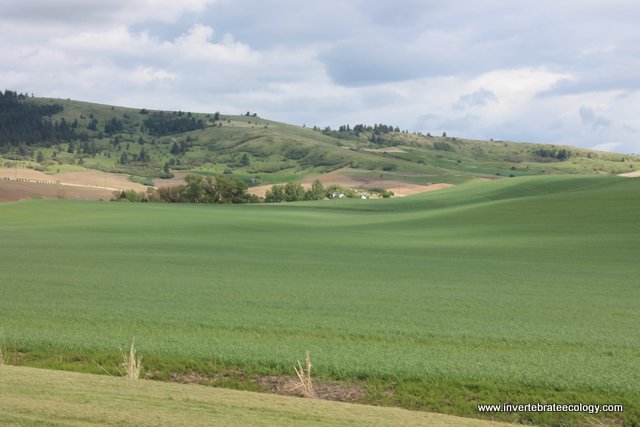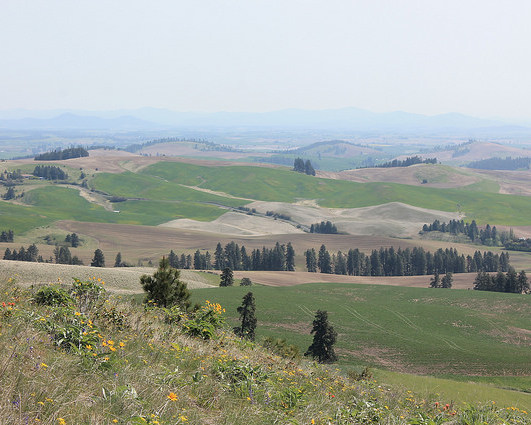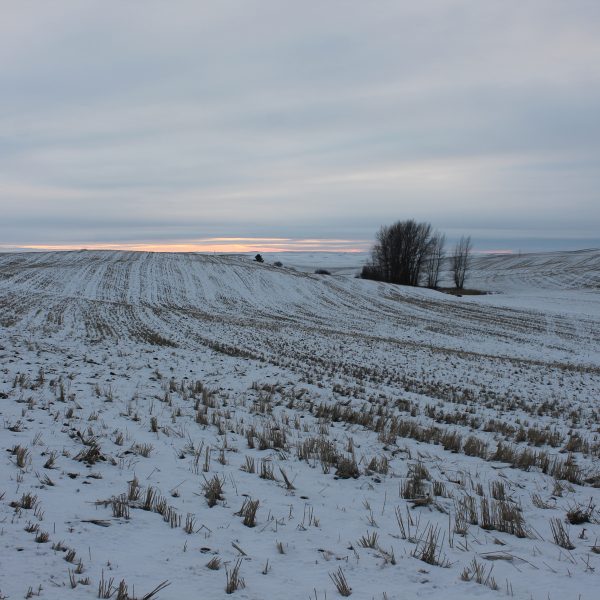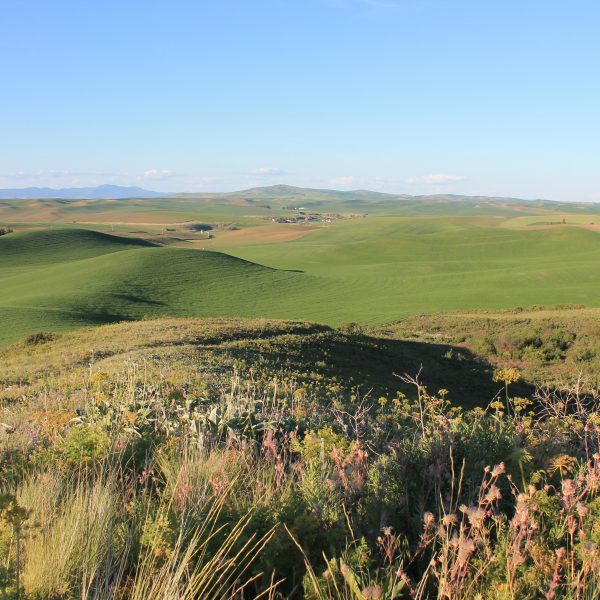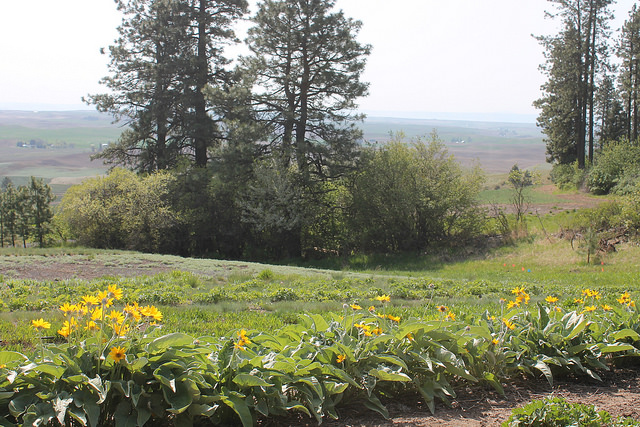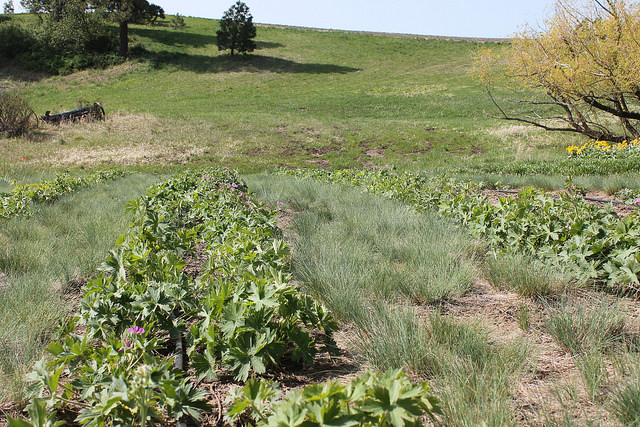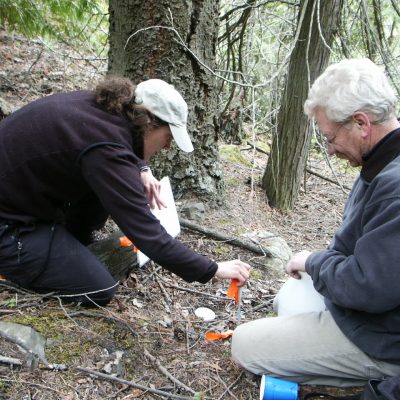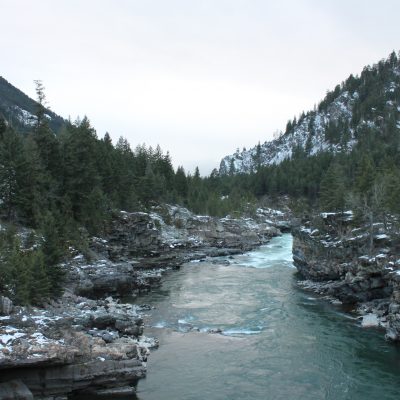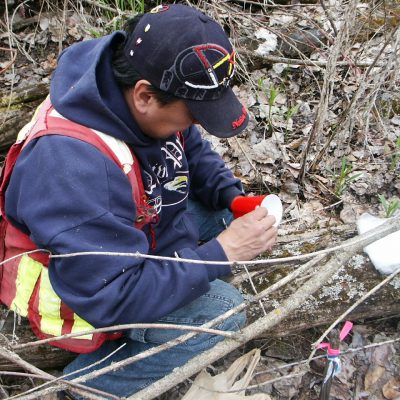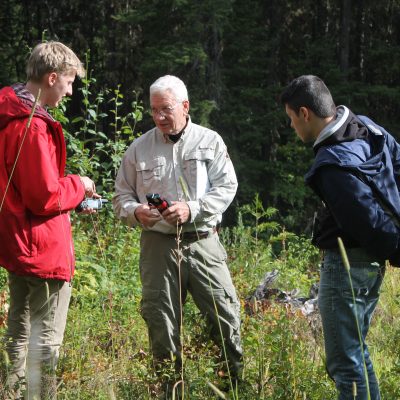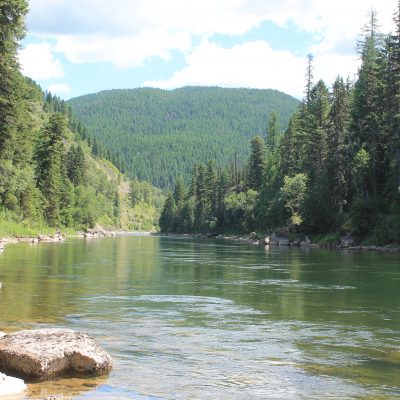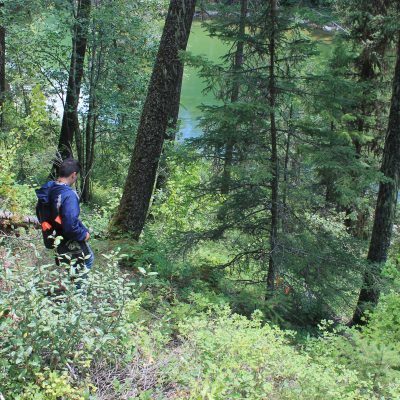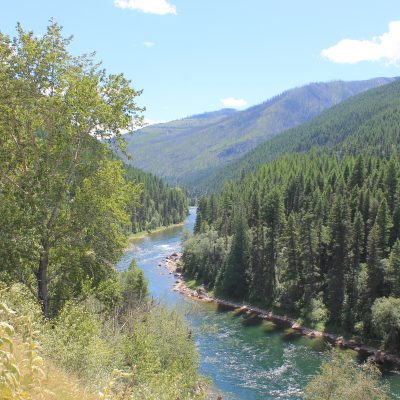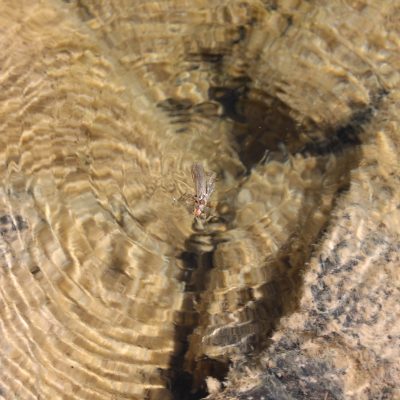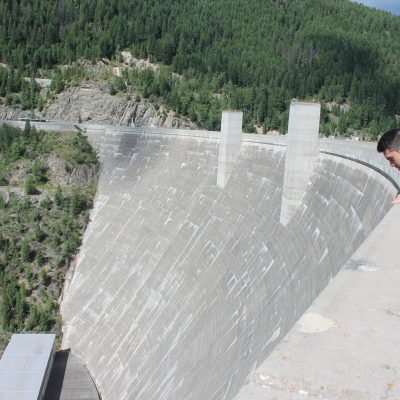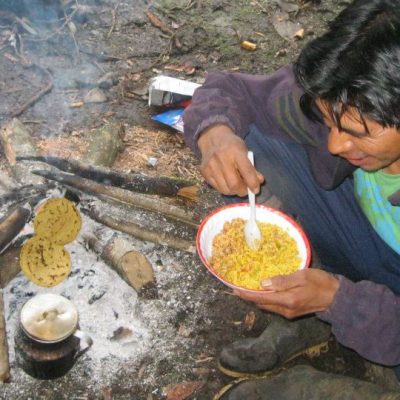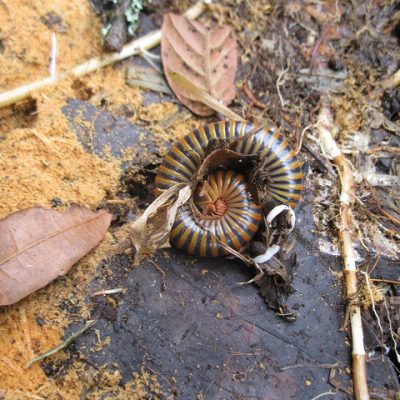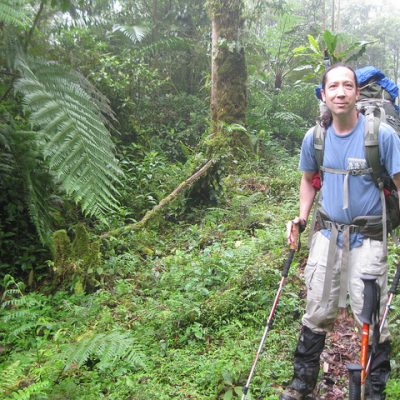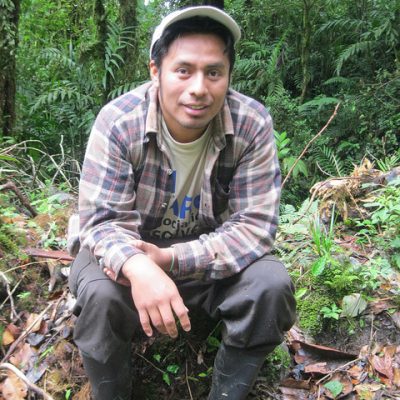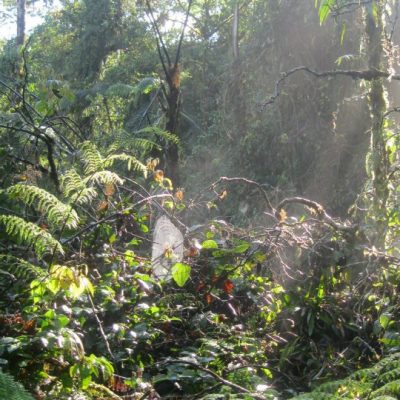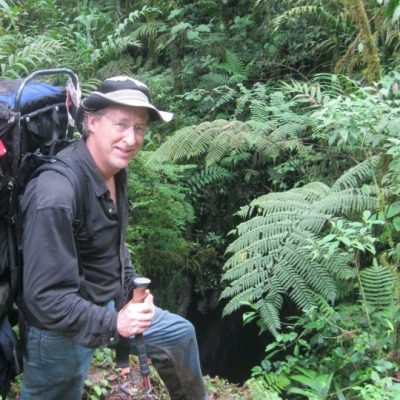Projects
Palouse Prairie and the agricultural matrix
Tim Hatten (Invertebrate Ecology Scientist) has been involved in a multi-year study examining agricultural matrix-element effects on ground-dwelling beetles and native bees of the Palouse Prairie Bioregion. The fragmentation and deterioration of native habitats poses serious threats to the survival and persistance of invertebrates and the ecological functions and services provided by them.
Management of the agricultural matrix surrounding these remnant habitats can have a profound influence on these organisms both within and outside the remnants. Innovative agricultural practices such as reduced tillage, crop rotations and integrated pest management can benefit insect-plant interactions leading to more sustainable cropping systems and conservation opportunities within the matrix. Organizations that have been involved in this study include the University of Idaho and the USDA-Agricultural Research Service.
The Kootenai floodplain – Operational Loss Assessment
Invertebrate Ecology (IE) has contracted with the Kootenai Tribe of Idaho (KTOI) on a multi-year Operational Loss Assessment (OLA) for the 500 yr floodplain of the Kootenai River. To this end, IE has assisted The KTOI to develop a terrestrial-invertebrate multi-metric index of biological integrity (IBI) so that they can better assess, and rank, the relative ecological condition of riparian sites within the floodplain. While aquatic IBIs are common, and in use by many municipalities and tribes, terrestrial IBIs are still rare. Indexes of biological integrity incorporate multiple biological attributes (including abundance, richness, diversity, guild and trophic metrics) in order to provide a more complete and robust picture of site condition, and if suitable for terrestrial systems they could become important for monitoring and tracking site condition.
The model development phase for the Terrestrial-IBI is complete. Invertebrate Ecology identified and enumerated over over 1,000,000 specimens over a 7 year period, and classified them by a variety of guilds and metrics for IBI development. Subsequently, analysis by statisticians at the University of Idaho, Washington State University, along with ecologists at the KTOI, Kramer Fish Sciences, Invertebrate Ecology, Montana Department of Parks and Wildlife, and others (from an interdisciplinary team) concluded work on the IBI model. A half dozen metrics were shown to explain the majority of variance in the data set, and were shown to be quite predictive of riparian site condition within the floodplain (Shafii et al. 2014).
The IE lab documented range extensions for several terrestrial species of insects collected by Kootenai Biologists during this study including a rare and minute wasp species (Hymenoptera: Mymarammatidae: Mymaromella pala) (Hatten et al. 2010, Johnson et al. 2012), an exotic ground beetle species (Coleoptera: Carabidae: Carabus granulatus), (Hatten et al. 2009), and a native ground beetle species ((Coleoptera: Carabidae: Synuchus impunctatus) (Hatten et al. 2011). Additionally, we have documented new species distributions for at least one species of weevil and a minute ant-predating spider (Manuscripts in preparation).
References
Hatten, T. D., N. Merz, W. J. Johnson, C. L. Looney, S. Soults, R. Capilo, D. Bergeron, P. Anders, P. Tanimoto and B. Shafii. 2010. NOTE ON OCCURRENCE OF MYMAROMELLA PALA HUBER AND GIBSON (HYMENOPTERA: MYMAROMMATIDAE) IN MONTANA: A NEW STATE RECORD. Western North American Naturalist 70 (4): 567-569. See our blog and also available online: https://ojs.lib.byu.edu/spc/index.php/wnan/article/view/27384/25848
Hatten, T. D., N. Merz and C. L. Looney. 2011. Synuchus impunctatus Say (Coleoptera: Carabidae) in Idaho: New state record. The Coleopterist Bulletin 65 (3): 325-326.
Hatten, T. D., R. Sprague 4th, F. M. Merickel, C. L. Looney, N. Merz, S. Soults, R. Capilo, D. Bergeron, P. Anders, P. Tanimoto and B. Shafii. 2009. Carabus granulatus Linnaeus (Coleoptera: Carabidae) in Idaho: New state record. The Coleopterists Bulletin 63(4): 412.
Shafii, B., W. J. Price, N. Merz, and T. D. Hatten. 2014. Multivariate statistical analysis of terrestrial invertebrate index of biotic integrity. Applied Statistics in Agriculture, W. Song (Ed). Kansas State University, Manhattan, Kansas, 80-102.
Hungry Horse Reservoir and The Flathead River
Montana Fish, Wildlife and Parks is working with the Kootenai Tribe of Idaho to test the Kootenia’s Terrestrial-IBI (see The Kootenai flodplain – Operational Loss Assessment) in a watershed similar to that of Kootenai watershed (the river reach from Libby Dam down to the bottom of the Meander Reach at the Canadian Border). To this end, in 2014, Invertebrate Ecology was contracted to sample and identify
invertebrates from 40+ sites in the riparian floodplain of the Flathead River. As in the Kootenai, invertebrates were captured by placing 9 pitfall traps in a widely-spaced “x-pattern” at each site. Traps were left out for a 24 hour period, collected, specimens placed in alcohol and subsequently identified and classified by guild in Invertebrate Ecology’s lab in Moscow, Idaho.
Cloud Forest Conservation
Invertebrate Ecology’s Tim Hatten is on the Board of Directors of Conservation Imaging Inc., a non-profit organization dedicated to conservation or flora, fauna and habitats around the world. Dr. Philip Tanimoto, Director of Conservation Imaging, is the inspirational lead on the Cloud Forest Conservation Initiative, an effort aimed at conserving important cloud forests such as Cerro El Amay in Guatemala. This forest is one of the largest intact patches of cloud forest left in Central America, and little is known about the flora or fauna found there.
Tim Hatten is working with the Cloud Forest Conservation Initiative to inventory the terrestrial invertebrates of Cerro El Amay, having been involved in two different week long studies in the forest. As data and information is developed from this study it will be shared with the public and used to help inform future conservation efforts in the region. More specific information on the project can be found at this website: http://www.forestprimeval.org/. Information on Conservation Imaging can be found here: http://www.conservationimaging.org/index.html.





